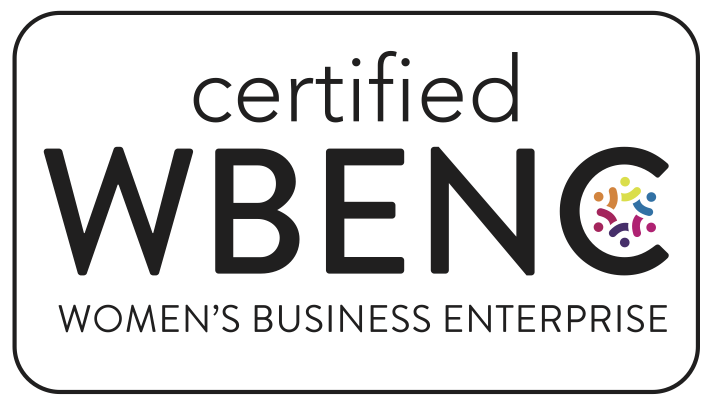As organizations struggle to deal with the Great Resignation, the thirst for business growth has led some of them to engage in talent poaching and to offer massive incentives for employees to leave their current employers. Those employers must be doing something right if their competition sees value in their workers, but now they need to step up their game to keep those good employees around. Retaining top-performing staff is certainly a much better business strategy than trying to convince them to come back after they’ve left: not only does it keep top talent on board, but it also saves the time and money involved in backfilling roles. Fortunately, there are some tried-and-true strategies companies can use to help cultivate and retain a thriving workforce.
First, learn to recognize complacency. A company with long-term employees that is not experiencing as much growth as it would expect based on its resources should be asking its leadership team some tough questions: “How has our organization improved lately?” and “When was our last real success?” If the answers to these questions point too much to the past, the organization not only has a problem with hitting its goals but also has a workplace culture that has accepted these flatlining results. When team members are okay with the company’s progress (or lack thereof), that’s a problem. When team members have been loyal to the company in the past, their willingness to accept the company’s progress (or lack thereof) puts employers in a tough spot when those employers care deeply about both honoring loyal employees’ contributions and maximizing the organization’s potential.
With the right approach, though, organizations don’t have to sacrifice loyalty for performance. By implementing some (or all) of the following 13 creative strategies, companies can increase their ability to grow and retain great employees.
Bring in new hires.
When a company has open roles or needs to expand its team, bringing in external hires is one way to “reset” the organization, especially when those outsiders bring new ideas that can help motivate current staff. The key to getting existing employees and new employees to gel together as a team is to honor each group’s unique perspectives.
- Set aside ample time for everyone to get to know each other on a personal level.
- Acknowledge the successes of the existing team.
- Empower the new hires.
- Encourage existing employees to be open to the new hires’ suggestions.
To make this transition most successful, though, companies also need a separate plan for improving employee engagement among any poorly performing long-term employees.
Give team members a chance to grow.
Helping longstanding current employees shift into learning mode and restart their personal growth process is one of the best ways to get them excited to stay at a company—and back into a position where they can help the business grow.
- Provide personal development opportunities (such as attending a conference or networking with people in similar roles at other organizations).
- Offer skills assessments to generate excitement about developing their strengths further or picking up new skills.
- Create formal opportunities for them to try out new roles or responsibilities within the company.
- Identify tenured employees who have maintained a growth mindset while staying invested in themselves and the organization over their many years there, and inspire others to follow their example by publicly recognizing their contributions.
Create performance plans for the best employees.
A company’s competitors are interested in luring away only its top performers: the employees who want to be challenged and who often exceed expectations. Organizations can have better luck keeping those employees by finding ways to measure their performance. Performance reviews can shed light on where employees are going above and beyond (and where their weaknesses lie), but be sure to look past money and numbers, too, to see who is trying to excel. These measurements make it possible to set goals and expectations—metrics that are especially helpful in the onboarding process for new employees and give all employees clear direction and ensure that their work stays on track.
Provide mentorship opportunities.
High performers want to expand their skill sets. Companies should provide viable methods for employees to expand their knowledge and gain experience.
- Appoint mentors to guide both new and current employees, so they have someone to learn from and to go to with questions.
- Give employees opportunities to lead projects.
- Encourage employees to attend classes, webinars, and professional development conventions.
Offer flexibility in the workplace.
Employees are human: they have kids, doctor’s appointments, and countless other non-work-related commitments and interests. Flexible schedules and support for a healthy work–life balance can increase employee retention. Similarly, a policy that allows for some degree of remote work not only gives employees a break from the office but also saves them time and gas money. This simple “perk,” which has become increasingly desired (and even expected) in the wake of the pandemic, can make an employer more attractive to employees—and incentivize them to stay.
Pay more competitive salaries.
A company can gain an edge by keeping tabs on the competition via job websites such as Glassdoor or LinkedIn that make it possible to find out how other organizations compare when it comes to compensation, benefits, and workplace culture. By using this information to evaluate their own offerings, then adjusting them to meet or exceed top competitors’ salaries and benefits, companies can increase their chances of retaining and attracting top talent.
Start employee appreciation initiatives.
One of the easiest ways to keep employees happy is to let them know that their accomplishments are being noticed.
- Take note of employees’ achievements or yearly anniversaries.
- Don’t wait for annual performance reviews: offer recognition as soon as it’s merited.
- Consider asking employees how they like to be rewarded. Some may be looking for just a pat on the back, and an occasional, simple form of recognition (such as “Great work!”) could be all that’s needed to keep them motivated.
Offer perks and incentive-based bonuses.
Employees often respond favorably to performance-based incentives that give them opportunities to earn more money. (After all, who doesn’t want a bigger paycheck?) Companies don’t have to find this extra income in their budgets, because the employees will bring it in themselves. Outside of healthcare insurance, organizations can also attract employees by offering them a wider variety of benefits, investments (such as stock options), and 401(k) retirement plans.
Provide workplace amenities.
Inexpensive niceties, such as free coffee, water, and snacks, can go a long way toward making employees happy and productive. Companies should also ensure that their employees have comfortable work environments; the ability to communicate with their coworkers easily; and any tools, equipment, software, and other resources that could make their jobs easier.
Provide career growth opportunities.
Some employers see offering job title changes as a cost-efficient way to retain employees and boost morale. But that approach doesn’t have long-term effectiveness unless those job titles changes come with career growth paths and increasing responsibility. Knowing that there is more for them to accomplish and other roles to aspire to can increase employee engagement, which can help reduce turnover and improve job satisfaction.
Use noncompete agreements sparingly.
No matter how happy a company’s workers are, some of them will eventually leave. When employees have regular access to sensitive information and their departures could lead to damaging consequences, a noncompete agreement can be a good way to protect the company. The effectiveness of these types of contracts varies from state to state, however, and some states are considering outlawing them altogether. When its employees don’t have access to vital information, a noncompete agreement could open a company up to potential problems. Such agreements could also push away potential talent who might see them as too limiting. And because most noncompete agreements have time constraints that eventually expire, companies that use them must also consider the costs involved with pursuing lawsuits against former employees.
Welcome feedback.
Not all employers take advantage of exit interviews, even though these conversations can be the best opportunity to receive raw, honest evaluations from departing employees. Asking an employee why they are leaving may reveal why they found the competition more appealing—and how to prevent the departure of further employees. Survey existing employees about their jobs, too, and ensure that they will not suffer any negative consequences for offering their feedback. Make it clear that the organization is genuinely interested in their experiences, feelings, and judgments.
Don’t burn bridges.
Although it’s easy to be bitter about an employee’s exit, it’s more productive to make their departure a positive experience. (No organization wants its disgruntled ex-employees to spread their negativity among current team members or potential candidates.) Focus on their contributions to the company and on the goals they’ve met, and encourage them to keep in touch after they’re gone. There’s always a chance that they could return to the company one day!
Final Thoughts
Because a high employee turnover rate can be detrimental to any business, companies must continually evaluate (and adjust as needed) their employee experience if they want to thrive in today’s especially competitive job market. Organizations need to consider providing employees with more of the working conditions and perks they seek, such as learning opportunities, flexible schedules, and a stronger focus on overall employee satisfaction. By placing the emphasis on its most important resource—its people—a company can attract more top talent and improve its retention.

